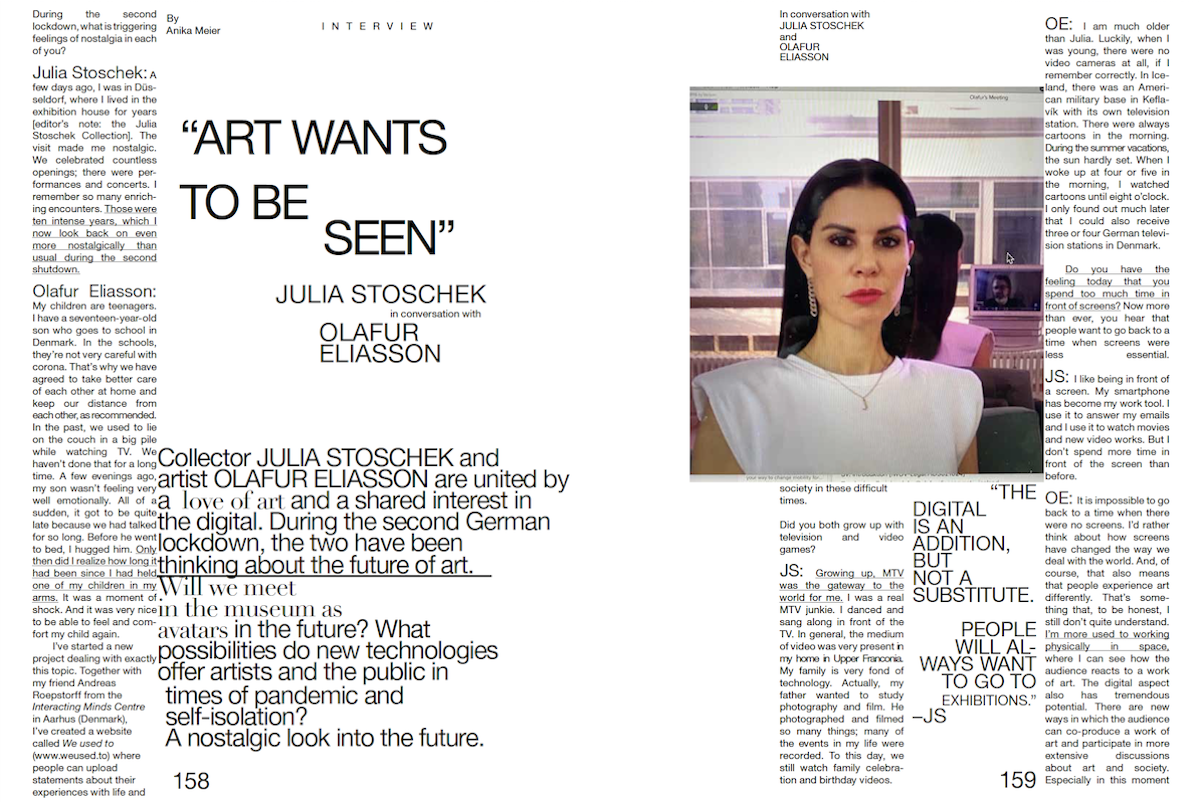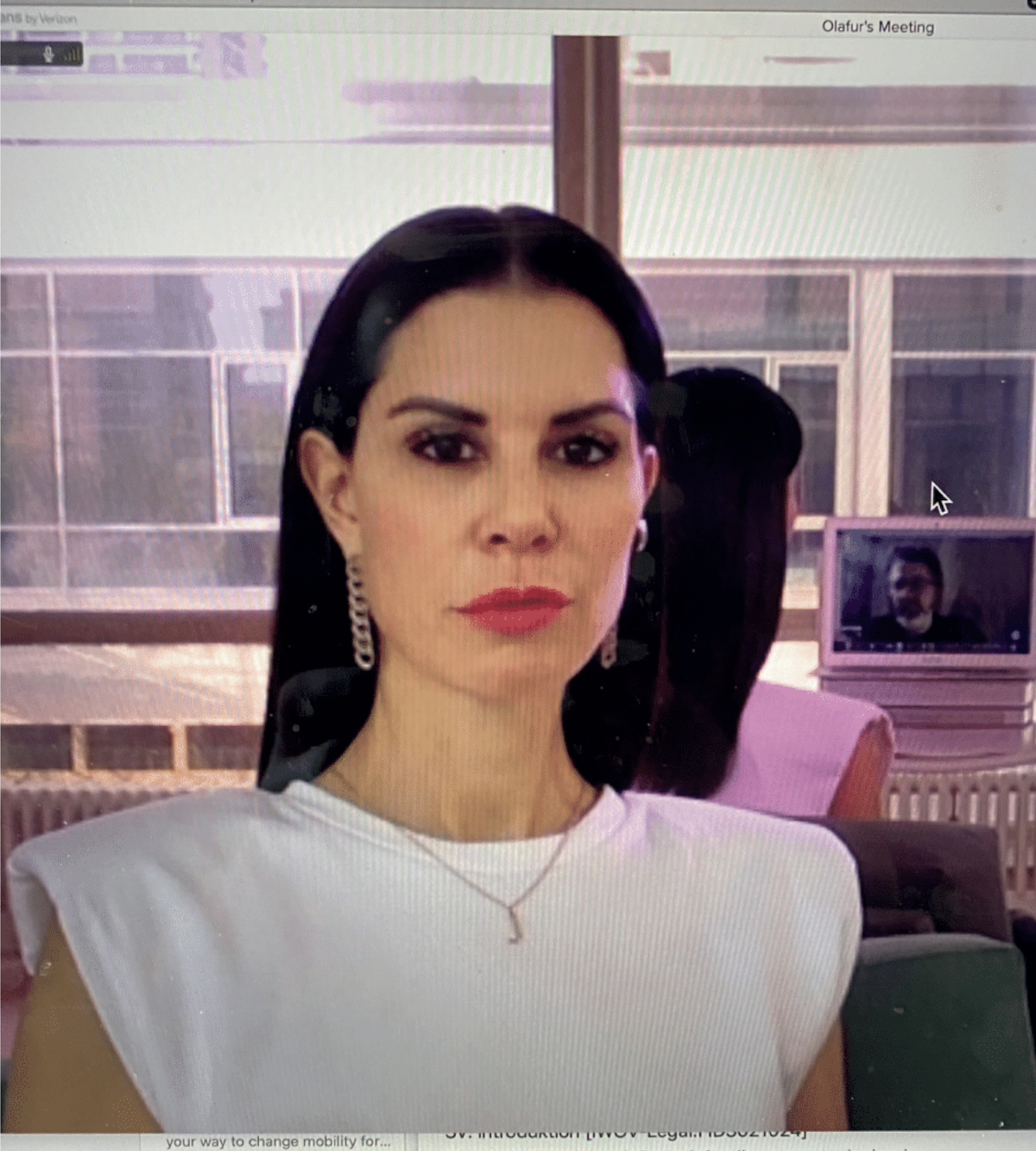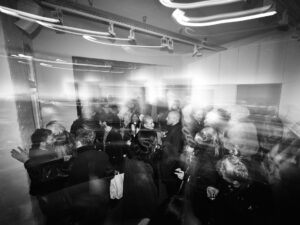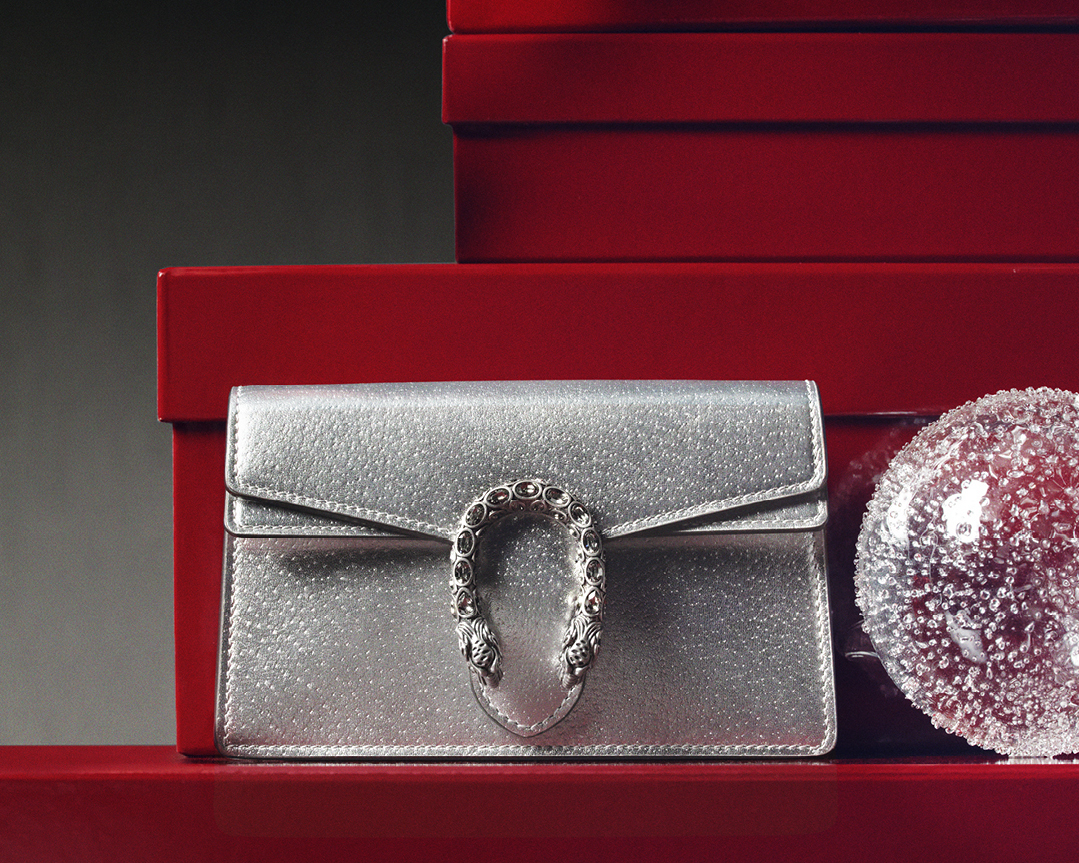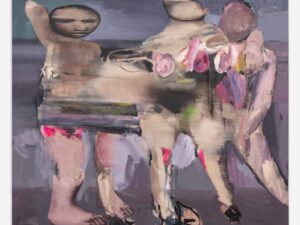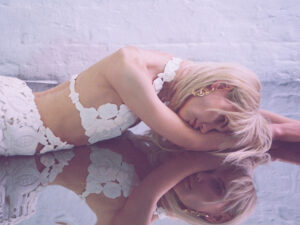Ms. Stoschek, works from your collection can be viewed online on the jsc.art website. What made you decide to make the videos freely accessible on the internet?
JS: Art wants to be seen. And video art is an absolutely democratic art form; it can be reproduced without loss of quality. Its scarcity only became apparent through the market. I want to make it possible for everyone, no matter where in the world, to see the works in my col-lection at any time without restrictions. This is a long-cherished hope of mine and a great project that corona has finally triggered.
“AND, IDEALLY, WE’LL RECONSIDER WHAT WE BELIEVE TO BE REALITY.” – OE
You also collect works by artists of the POST-INTERNET ART generation such as Jon Rafman and Ian Cheng, Cao Fei and Ed Fornieles. What criteria do you use to select works for your collection?
JS: It is part of the collection’s mission to represent different generations and periods of time-based media art, from its beginnings in the 1960s to the present. Although the collection already reflects a certain diversity, it is important to include new voices and perspectives. A collection shapes the understanding of our past, “an archive of temporalities,” as curator Daniel Birnbaum beautifully put it. This, in turn, determines the possibilities we can imagine for the future. Art, literature and film build worlds. And as Beuys once said: “The future we want must be invented. Otherwise we’ll get one we don’t want. ”Through collecting, one shapes the future.” I firmly believe this.
“THROUGH COLLECTING, ONE SHAPES THE FUTURE. I FIRMLY BELIEVE THIS.” – JS
Mr. Eliasson, you have worked with Acute Art and have made some augmented reality works public. For example, a rainbow or a rain cloud that people can place in their living room. What attracted you to working with AR?
OE: I’ve been familiar with AR technology for several years. We experimented with it in my studio, but I hadn’t been able to make the connection between technology and an artistic idea. At a time when digital spaces are the only safe environment for people, it suddenly made sense to create such a work of art. The AR work, titled Wunderkammer, is about looking at natural elements and objects that we would otherwise take for granted, in a new light. It is also about seeing the environment differently by adding something new and unexpected.
Since July, I’ve also been working on a huge collective artwork with chil-dren all over Europe and beyond, called Earth Speakr, which was created on the occasion of the German EU Presidency. The artwork uses a specially developed app, accompanied by an interactive website in twenty-five languages (www.earthspeakr.art), allowing children to record a message about their wishes for the planet’s future. The children can project this message into the mouth of any object that they choose in their surroundings. This way, children can speak up for the future of the planet and adults are encouraged to listen to what children have to say.
JS: Anyone with a smartphone can use augmented reality. It offers a playful approach to art. No matter where you are, you can use the smartphone’s camera function to place a work of art in the room, just as Ola-fur makes it possible with the rainbow and rain cloud. In this way, people who haven’t previously engaged with art have a chance for encounters. VR is a little more challenging to access because you still have to put on a headset. It fasci-nates and scares me at the same time. What I find problematic about VR is that you can only enjoy it alone. Usually, when you walk through an exhibition, you talk to friends and exchange ideas. That is not yet possible. So the aspect of isolation in reception is difficult, but at the same time, it opens uppossibilities for a new formal language in virtual reality. Technology will evolve so that headsets become smaller or we’ll wear normal glasses or even contact lenses. We are a media collection, so it is natural for me to follow technical developments. I can’t say exactly where it will go. When 3D came, they said that this was the break-through. Now there is VR and AR and they say that this is the future. I think these formats will stay.
Daniel Birnbaum, director of the London-based company Acute Art, sees the strength of augmented reality and of works such as those by Olafur Eliasson in the fact that the viewer becomes the curator. Hans Ulrich Obrist recently said that augmented reality is the future, technology should not be used for entertain-ment and passive consumption alone. Augmented reality is probably the bridge to Social VR, i.e., to virtual spaces in which we can come together via Mozilla Hubs and, at some point, Horizon (Facebook), for example.
OE: I am convinced that AR and VR will endure. In terms of development, the art world is strongly oriented towards gaming, and when it comes to the social dimension, there will undoubtedly be solutions soon. We’ll be able to meet as avatars in virtual space without being in the same place physically. AR and VR can add an interesting new element to art cre-ation. Using personal technology, we can create art-works that are distributed over time and space in a way that makes the connection between artist and audience more diffuse, but perhaps also more intimate. This technology can be a fascinating tool. We think about what we perceive. We think about the constructed nature of our environment. And, ideally, we’ll reconsider what we believe to be reality.
Here is a perhaps provocatively intended statement by Peter Weibel, the director of the ZKM Karlsruhe. In an interview with Monopola few weeks ago, he said that you don’t have to experience art in reality. “In the museum, where people who don’t know each other and only get on each other’s nerves are crowded in front of the pictures, a closeness is conjured – just like in a concert hall or theater. This is a fictitious closeness, lied about by mass industry,” says Weibel. Does art need closeness, in other words: the on-site experience? Does it perhaps simply depend on the medium ?
JS: We are digitizing my entire collection. But that will never replace a visit to the exhibition, also because it’s technically possible to present the works in a completely different way. Exhibition spaces are free spaces in which we have the opportunity to think about ourselves. The digital is an addition, but not a substitute. People will always want to go to exhibitions. When we reopened after the first shutdown, 1500 people lined up for two hours a day to see Jeremy Shaw’s exhibition. The desire is there.
